With the global 5G network build-out underway, we wanted to highlight the Supermicro SYS-1019P-FHN2T with an Intel FPGA PAC N3000 solution. The SYS-1019P-FHN2T is a 1U short-depth server meant for edge deployments. We have covered many of the lower-power Atom and Xeon D machines in this segment, but this is a large step up in terms of performance and capabilities. The PAC N3000 is Intel’s specialized FPGA-based (Arria 10) card to help service providers accelerate network functions at the edge. It also is one of Intel’s first cards to be offered both as a base card, but then also with optional bundled IP from partners to help make the transition to standardized hardware easier. We are looking at these two components together to show the role each has to play in a 5G edge solution.
Video Version
This is part of our visit to the Supermicro HQ post-lockdown series. We previously looked at the Supermicro 3rd Gen Xeon Scalable Server which we showcased alongside the Cooper Lake launch. We also looked at the Simply Double, 1U EDSFF, and the company’s new 60-Bay Top Loading Storage Server. More recently, we looked at the pole-mounted IP65 Rated Supermicro Outdoor Edge System and a new Ultra 12x NVMe 1U Server. As a part of that series, we have an accompanying video:
We are going to have more detail in this article, but want to provide the option to listen. As a quick note, Supermicro filmed the video bits at their HQ, provided the systems in their demo room, and their product managers that were able to make it. We did a whole series but are tagging this as sponsored since we relied upon their facilities instead of our own. I was able to pick the products we would look at and have editorial control of the pieces (nobody is reviewing these pieces outside of STH before they go live either.) In full transparency, this was the only way to get something like this done, including looking at a number of products in one shot, without going to a trade show during shelter-in-place.
Supermicro SYS-1019P-FHN2T Hands-on
The front of the Supermicro SYS-1019P-FHN2T has a lot going on. You can see everything from buttons and LED indicators to drives, expansion slots, and the motherboard I/O.

That front I/O includes legacy serial, VGA, two USB 2.0 and two USB 3.0 ports, an out of band IPMI/ Redfish management port, and two RJ45 network ports. On this system, those are dual Intel 10Gbase-T ports. All of this front I/O is designed to a technician can service the system from the front, instead of heading to the rear of the chassis. This is important in tight edge racks where there is often no rear aisle access. As a result, we have a rear that consists of fans and a single PSU in this version. In some locations without A+B power, a single PSU is a requirement so that is the spec of this system.

The left front of the chassis has two 2.5″ bays, wired for SATA in our configuration.
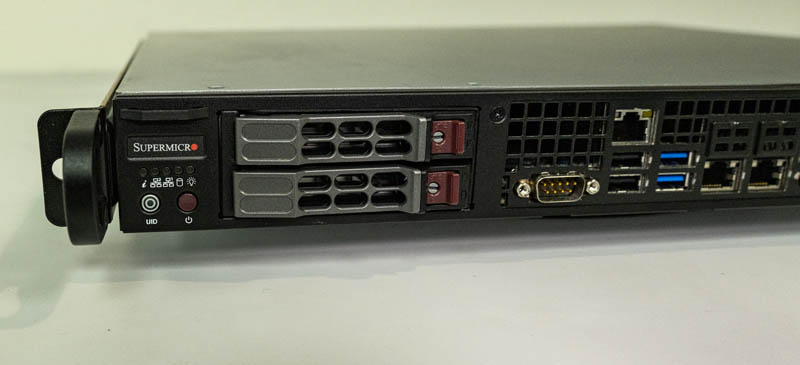
The right side has two full-height expansion slots. While in some of Supermicro’s lower-end edge devices and chassis, there are significant thermal restrictions for expansion cards, the SYS-1019P-FHN2T is designed for higher power accelerators, NICs, and GPUs.
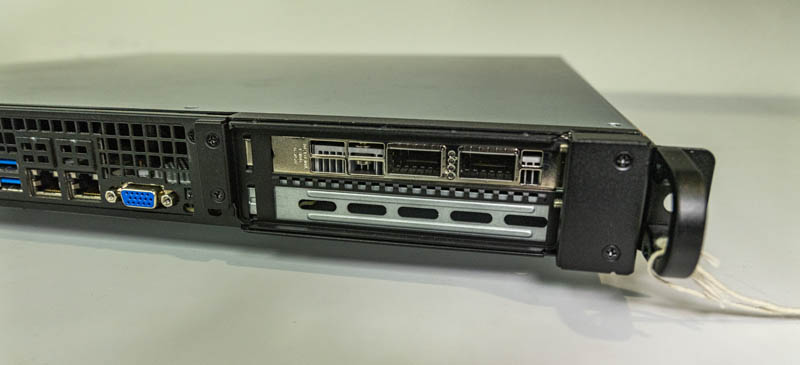
Inside the system, we can see just how the short-depth chassis is at 381mm or 15 inches. It is effectively the length of the motherboard, fans, and sheet metal around them.
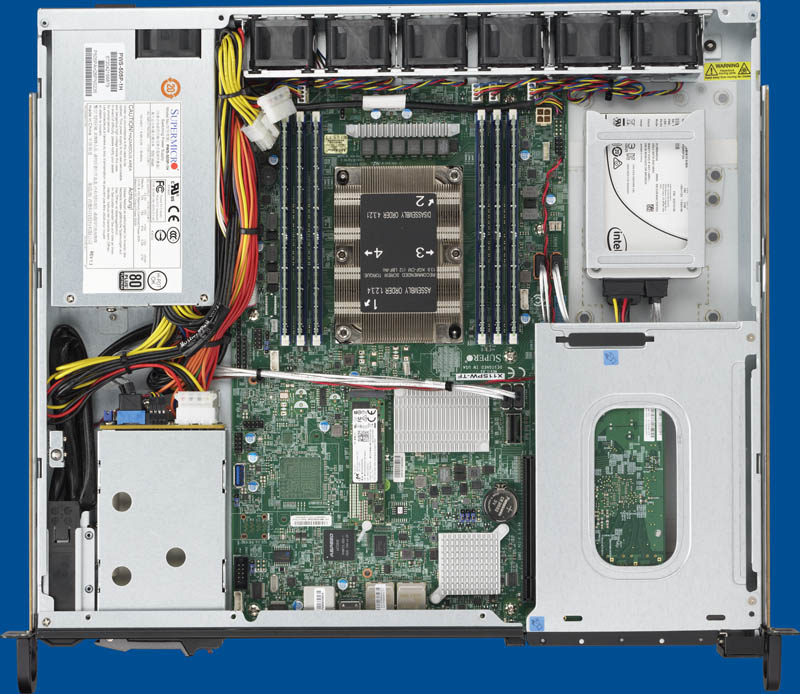
Airflow is a big deal in this system. There is an airflow guide that runs through the entire chassis to keep the CPU cool which is an important aspect to this design.
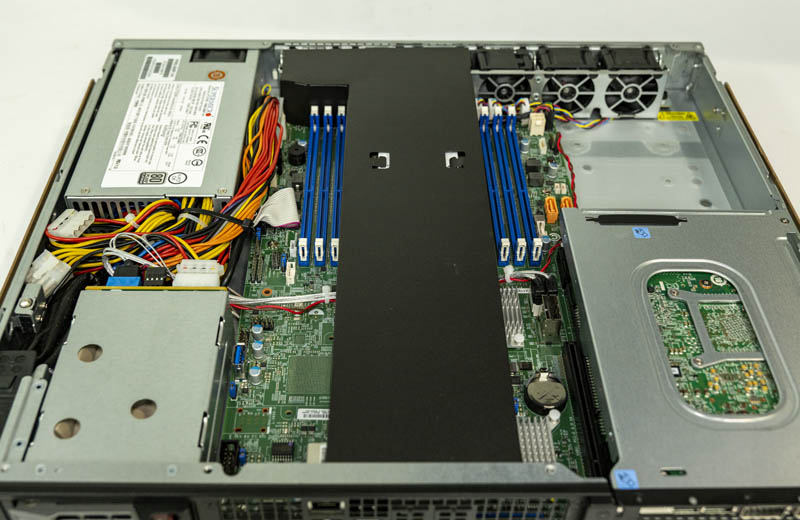
The system uses 2nd Gen Intel Xeon Scalable chips. That allows lower-cost x86 CPU compute, more memory, and more PCIe I/O than the Intel Xeon D-2100 at the edge. It also allows these systems to be more flexible with a single configuration using the same motherboard but scaling cores and power consumption with the socketed SKU rather than changing a BGA SoC motherboard. A key impact of this is that one can use up to 205W TDP SKUs in this server. That means one can fit 28 core CPUs in this edge machine if desired.
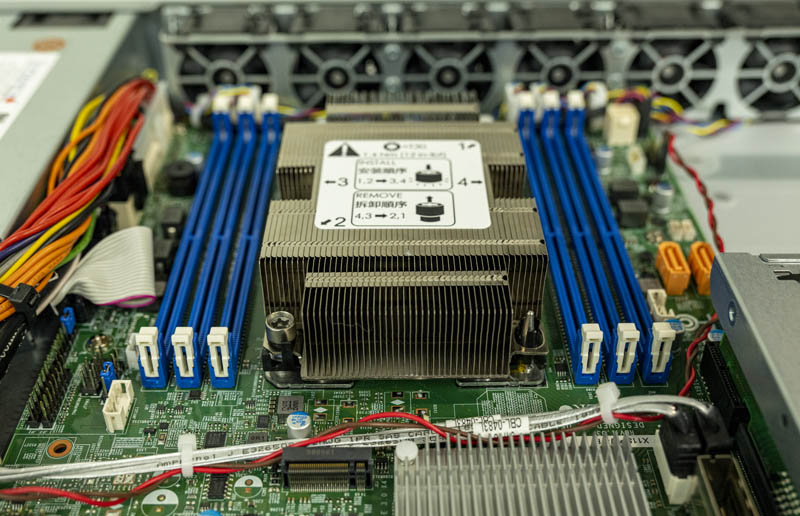
There is a sole M.2 slot and features such as the USB 3.0 Type-A internal header on the motherboard, but the area behind the CPU if mostly just PCB and ports to handle high-power CPUs.
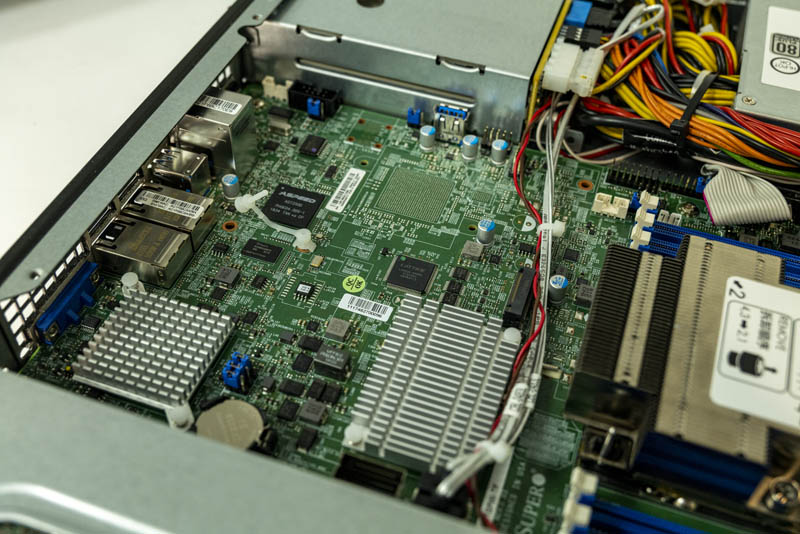
The other big story for this server is acceleration. Many of the system’s fans are designed to blow over the two PCIe x16 slots on the riser.
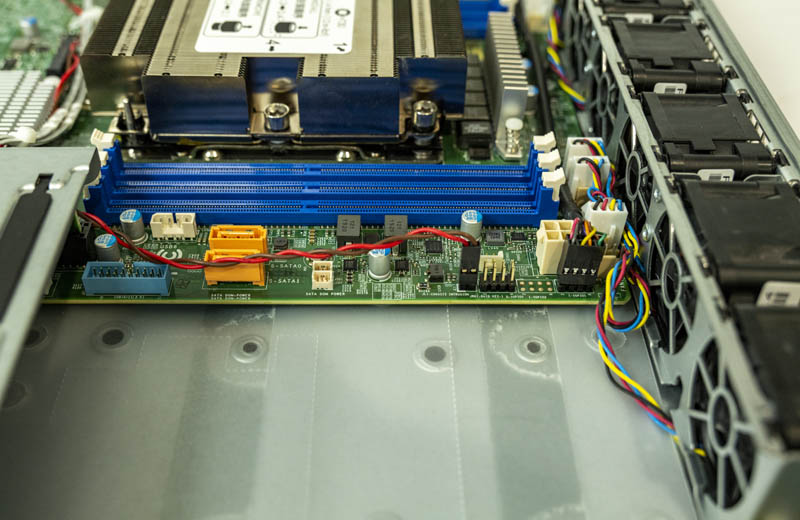
One can use multiple standard NICs, SmartNICs, storage, GPUs, and other accelerators in this slot. One we asked to see specifically with this system was the Intel FPGA PAC N3000.
Intel FPGA PAC N3000 Accelerator
We covered the Intel FPGA Programmable Acceleration Card N3000 for Networking and like the concept so we have wanted to cover it. This was the first hands-on opportunity we had with the card.
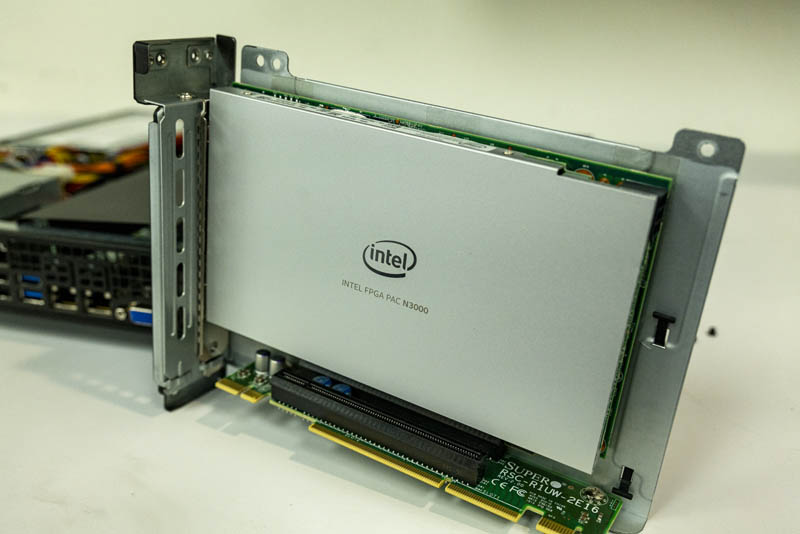
The Intel FPGA PAC N3000 utilizes two Intel XL710 controllers and an Intel Arria 10 FPGA with 1.1M logic elements. There is 9GB of onboard memory. While it looks like a simple solution, underneath that shroud is a lot of interesting hardware.

The PAC N3000 was designed for systems like the Supermicro SYS-1019P-FHN2T as it is designed for 5G service provider edge deployments. Instead of this FPGA card having to be part of a larger custom solution, Intel can offer the card in a PCIe form factor, housed in the SYS-1019P-FHN2T making it flexible. Field service and upgrades are simply replacing a PCIe card.
One of the other features that Intel has with the PAC N3000 is that it is starting to bundle IP with the card itself. That allows functions to be offloaded to the card without organizations needing to work on the RTL. This is something that we are seeing as a broader trend in the FPGA industry. More PCIe connected devices being sold as solutions complete with the IP needed to make them useful from day 1 without low-level programming.
Final Words
The global 5G mobile build-out is a huge opportunity. Companies like Supermicro and Intel have systems like the Supermicro SYS-1019P-FHN2T with the Intel FPGA PAC N3000 precisely to address the unique requirements of the 5G edge deployments. These systems can also be used for edge analytics when used with different accelerators. Many STH readers are involved in or will be involved in 5G and edge analytics related projects. As a result, we wanted to show off this solution since is the culmination of a number of trends we have been covering at STH over the past few years.

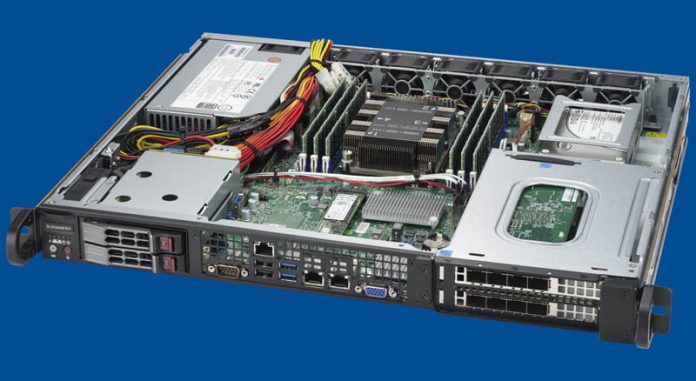



When are you going to review the Intel PAC N3000??? Intel let’s get STH one.
Can we get like an EDA primer ? A high level overview of circuit design. With all these FPGA’s and ASIC’s being stuffed in servers it might be helpful to the system administrators having to install them. Weird thing is I never heard of RTL, and I still don’t really know what it is, but I’ve read about it twice this week.